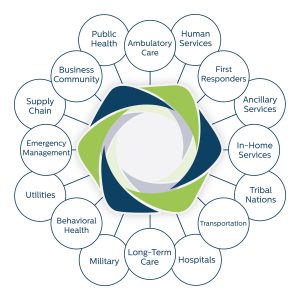
The Northwest Healthcare Response Network is proud to be a silver sponsor of the
Health Care of the Future Conference 2021
Washington state has always cultivated innovators: not individuals working alone, but strong teams working in an ecosystem of shared discovery.
The Northwest Healthcare Response Network is proud to have led and supported lifesaving collaborations among healthcare providers, public health agencies and emergency management.
Working together, we developed new systems for data gathering, analysis and patient care. We also forged lasting relationships and developed solutions that will make our region resilient, no matter what.
In any kind of emergency, people need the health care system to take care of them. The Network facilitates relationships among independent health care providers, public health agencies and emergency management so they can work together in a disaster.
Our mission is to ensure a functional health care system for all Western Washington communities.
We are uniquely structured and trained to be adaptable and work with multiple levels of government in multiple sectors, including hospitals, dialysis, long-term care, blood banks and more.
Our industry expertise and our deep relationships ensure that regardless of the type of disaster, we can facilitate the engagement of the right organizations, and lead in developing effective response strategies that can be scaled over time.
COVID-19 Response
Pandemics are the textbook example of the important role of a health care coalition. NWHRN activated its Healthcare Emergency Coordination Center in January 2020—weeks before the shutdowns began.
Since then, we have been involved in:
- Advising state leaders and policymakers on the healthcare response;
- Managing patient surges by creating the structures for regional, and then statewide, distribution of patients, to ensure no individual hospitals or regions were overwhelmed;
- Managing requests from hospitals, clinics and long-term care facilities for resources such as personal protective equipment;
- Collecting, analyzing and sharing data on essential issues such as hospital capacity, and advising on the development of better data-gathering tools;
- Developing tools for regionwide situational awareness, as well as designing the indicators that triggered when more collective action was needed; and
- Convened clinical leaders to share information and develop best practices for patient care, including on crisis standards of care.
COVID tested our capacities and highlighted that there is an even greater need to connect sectors, local regions and state and national resources. It is in our organizational DNA to work with all of our partners to improve our state’s safety and resiliency, and we are honored to do this work.

